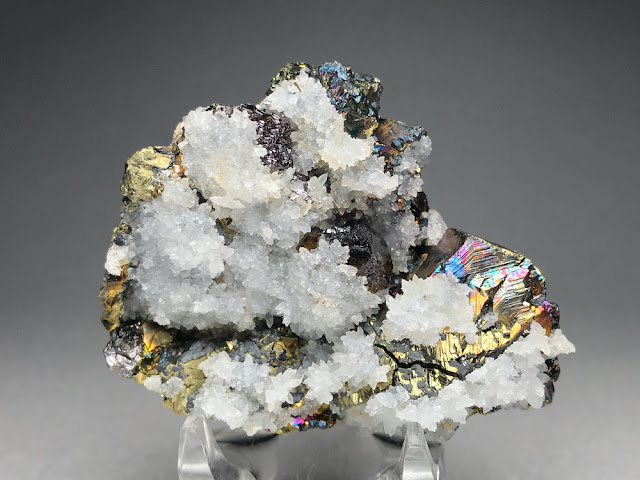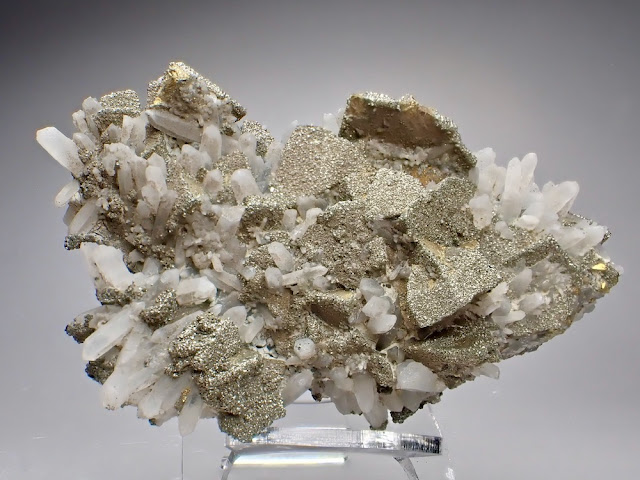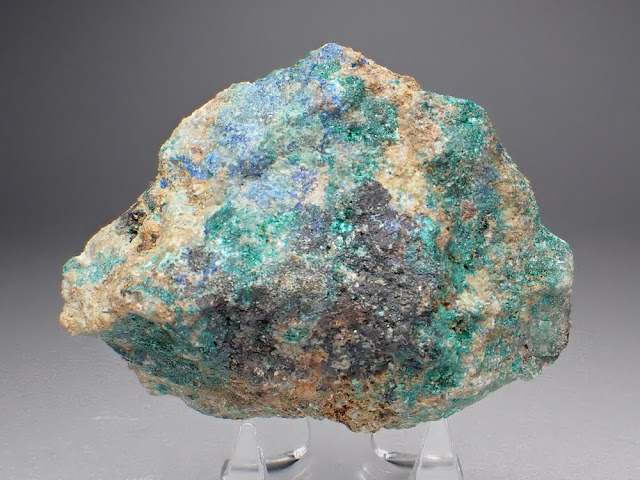阿仁の黄銅鉱、閃亜鉛鉱、そしてふしぎなやつ Chalcopyrite, Sphalerite, and a Strange Thing from Ani

秋田県北秋田市 阿仁鉱山 Ani Mine, Kita-Akita City, Akita, Japan 幅 width: 5.5 cm / 重さ weight: 50 g 黄銅鉱と透明感のある閃亜鉛鉱とは水晶をまとっていて全貌が明らかでないが、なにげに粒ぞろいで結晶サイズはともに 1 cm を超える。基盤側には黄鉄鉱もみられる。まず硫化金属鉱物が晶出したあと、細かい石英が雪のように積もったもので、東北あたりの石英・銅鉱脈に比較的よくみられる産状だろう。黄銅鉱上の一部に(エピタキシャルに?)成長している小さな黒い鉱物は方鉛鉱か。 Partly hidden by quartz, chalcopyrite and translucent sphalerite are fairly large with a diameter over 1 cm. There is some pyrite on the base. Quartz would have fallen like snow after the main sulfides had crystalized, which is not rare in hydrothermal quartz-copper veins in the Tohoku district. Small black crystals (epitaxially?) growing on a part of chalcopyrite would be galena. 黄銅鉱とべっ甲亜鉛とを覆うように細かい水晶が生える。結晶の形はともに菱形十二面体に準ずるようにみえる。 Chalcopyrite and sphalerite appear to be dodecahedrons, covered by quartz. 水晶からなにか棒のようなものが突き出る。 Something like a bar grows from quartz. 長さ 1.5 mm 弱の短冊状で黒色の結晶が水晶群から突き出ている。はじめ人工のものかとおもったが、状況からしてこれは天然の産物だろう。長い板状で先端がとがった槍のようになっている。黒変した黄銅鉱か、輝銅鉱か、あるいは阿仁鉱山で最初に報告された阿仁鉱? A bla...


